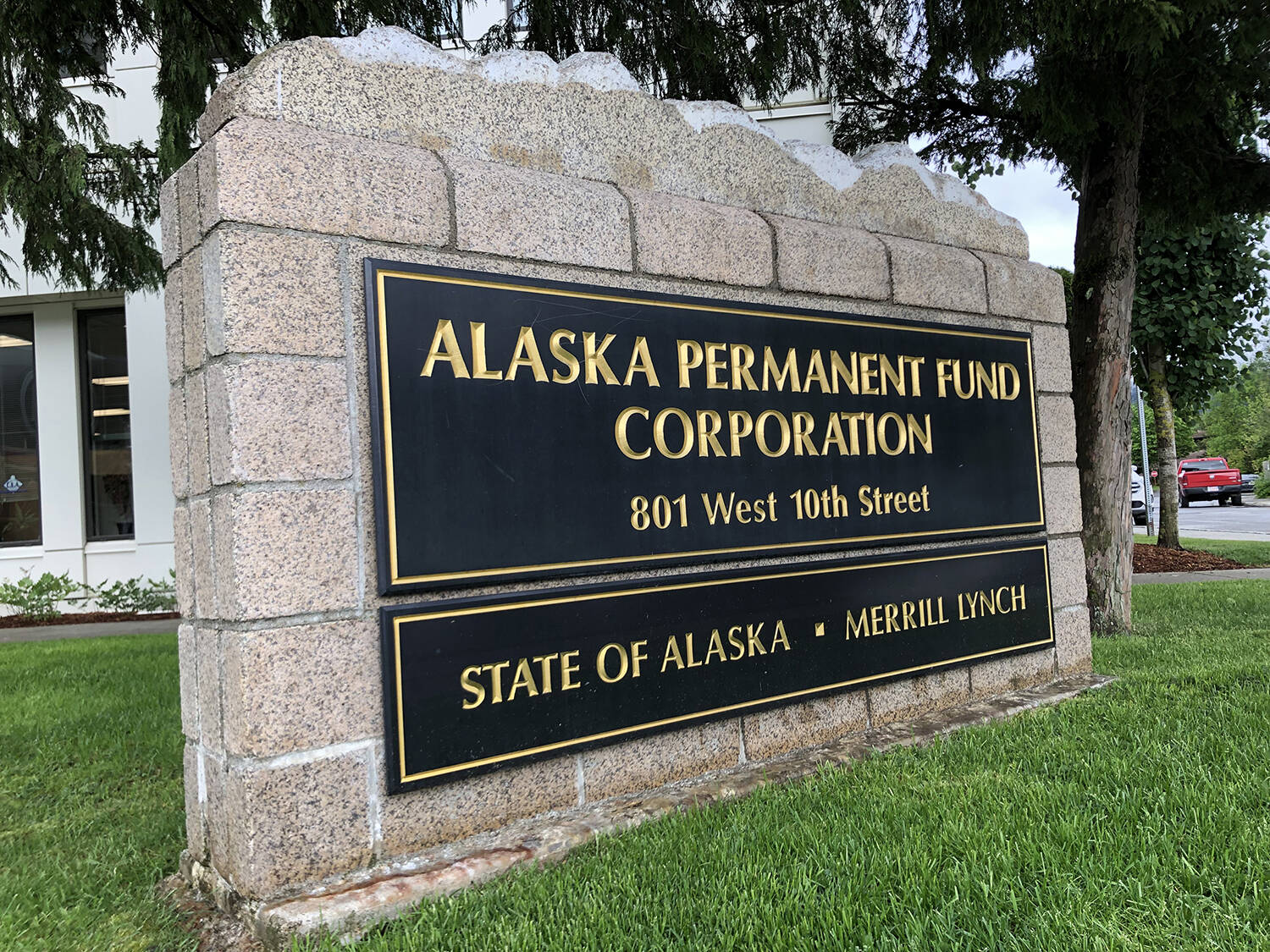The Alaska Permanent Fund Corp.’s investment earnings were again less than withdrawals in the 12 months ending in June, according to preliminary data scheduled to be released at the corporation’s annual meeting this week in Anchorage.
The corporation, which manages the $74.9 billion Alaska Permanent Fund, earned a 5.18% return, less than its goal of 7.97%.
Since 2018, an annual transfer from the Permanent Fund to the state treasury has been Alaska’s largest source of general-purpose revenue, paying for both dividends and services across the state.
To make that transfer sustainable in the long term, investment managers need to average 5% plus the rate of inflation.
Over the past five fiscal years — since the transfer was written into state law — the fund has returned 7.93%, below the 8.91% target.
In part because withdrawals have exceeded earnings for four of the past five years, the spendable portion of the Permanent Fund is dwindling and could be exhausted within four years, independent observers have said.
The Permanent Fund Corp. is expected to discuss an analysis of the issue at its annual meeting. The release of that analysis has been forecast for December.
Looking at the short term, the corporation’s year-over-year performance significantly increased. In the fiscal year that ended June 30, 2022, it posted a negative return for just the sixth time since the fund’s inception in 1977.
Performance rose significantly for the fiscal year that ended June 30, but Chief Investment Officer Marcus Frampton said that the Permanent Fund missed out on most of the stock rally caused by artificial intelligence-linked technology companies.
From Jan. 1 through June 30, the S&P 500 index was up 16.9%, but just 10 stocks, including Apple, Amazon, Microsoft, Nvidia, Tesla and Google, accounted for 80% of those returns.
Callan, the independent firm contracted to provide third-party analysis of the Permanent Fund’s performance, noted that the S&P’s value is now more concentrated than at any point since the 1970s.
In slides scheduled to be presented this week, Callan concluded that the Permanent Fund performed in line or slightly better than average among large endowments nationally last year, but worse than most large public pension funds.
CalPERS, the largest public pension fund in the nation, reported 5.8% returns during its just-completed fiscal year. California’s retirement fund for teachers, the second-largest in the country, returned 6.3%.
Nationwide, state and local government pension funds reported a median return of 8.3%, according to a Wilshire Trust Universe Comparison Service reported by the Wall Street Journal.
In addition to discussing investment returns and strategic planning, this week’s annual meeting will include the APFC’s annual budget proposal, which includes more than $750,000 to establish a permanent office in Anchorage.
If approved, that office would be the APFC’s first satellite facility away from its Juneau headquarters. Over the summer, members of the board of trustees approved the creation of temporary office space in the state-owned Cordova Street building that houses Department of Environmental Conservation offices.
Eleven of the APFC’s 67 full-time, year-round positions are vacant, budget documents state, and staff are requesting an additional $700,000 for raises intended to improve recruitment and retention.
Overall, the bulk of the APFC’s proposed $226.8 million budget continues to be fees paid to outside firms hired on contract to manage corporate investment accounts.
The annual meeting will take place beginning at 8:30 a.m. Wednesday and continuing Thursday at the Hilton Anchorage. The meeting will be streamed online.
• James Brooks is a longtime Alaska reporter, having previously worked at the Anchorage Daily News, Juneau Empire, Kodiak Mirror and Fairbanks Daily News-Miner. This article originally appeared online at alaskabeacon.com. Alaska Beacon, an affiliate of States Newsroom, is an independent, nonpartisan news organization focused on connecting Alaskans to their state government.

